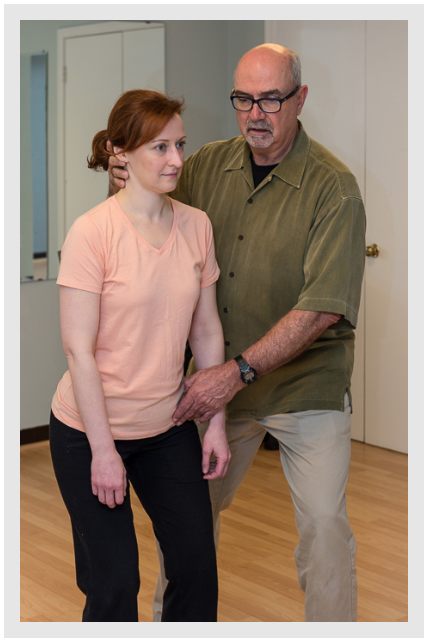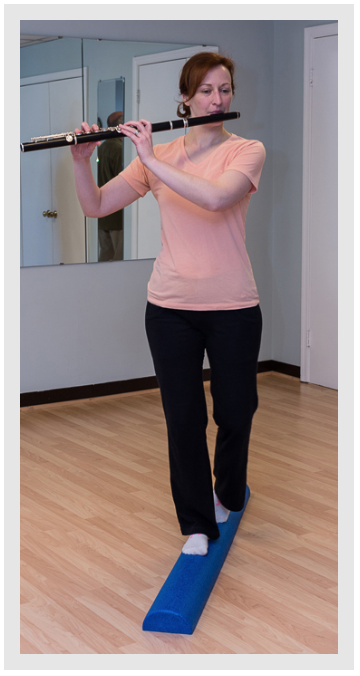“The Alexander Technique is a method of self study for experiencing,
understanding and improving how you function as a psychophysical unity.”
—Missy Vineyard
Here are some examples of useful techniques to help you move with purpose and be mindful of your body. I will teach you this and more, so you may improve performance, eliminate bad habits and improve over all health.

At left, student begins bending motion. Beginning a movement while continuing to direct the body up is essential. Starting wrong gets worse as the movement proceeds.
(Photos by Marie Joabar)
Above, student learns the importance of balancing muscle tone in the front and back of the body.

Student tries to maintain easeful coordination while playing a musical instrument. The balance log, at right, challenges different systems.
In 2008, the prestigious British Medical Journal published an extensive study on the benefits of the Alexander Technique for chronic and recurrent back pain. It concluded that one-to-one lessons taught by registered teachers of the Alexander Technique had long-term benefits for patients with chronic back pain.
The Alexander Technique is a unique process for change. It is a process that gives students an opportunity to explore the sources of maladaptive habits. With time and practice, layers of previously unconscious thoughts and behaviors are exposed by F.M. Alexander’s insightful way of using the conscious mind. The student is never forced to change. Alexander’s technique is the opportunity to choose a new and often unexpected response to a stimulus. Sometimes the new choice improves performance, sometimes it eliminates conditions causing pain. And sometimes it does both.
The Alexander Technique is widely practiced by performing artists. It is required at Juilliard, the London Academy of Dramatic Arts and the New England Conservatory. William Hurt, Kevin Cline, Meryl Streep and Glenn Close are among the musicians, poets and Noble Laureates who have benefited from Alexander’s work.
Alexander Technique teachers initially use words and their hands to gently guide students to a better understanding of easeful uprightness, balance, and coordination.
For many this is an unexpected experience, a recovery of ease lost by age, accidents, traumas, or all of the above.
The work progresses from simple activities—like standing and walking with less tension—to more complex activities like golf and playing a musical instrument. The lessons are geared to the student’s specific needs. All aspects of a student’s psychophysical unity, including emotions, are welcome. As skill in the work deepens, the teacher does less guiding with the hands and more to support the ongoing exploration of enhanced living.
~ Ed Bilanchone
